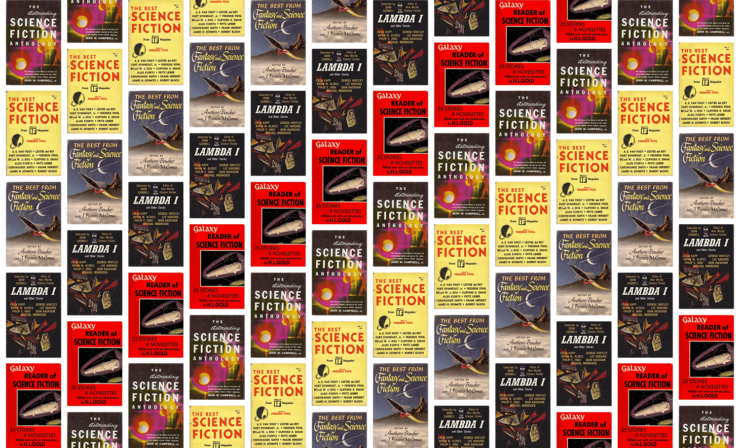Suppose for the moment that you are the editor of a science fiction and/or fantasy magazine. By the nature of magazines, each issue is ephemeral, removed from racks at the end of the month. However, there is an entire parallel ecosystem of books, which stay on shelves much longer. Is it possible to attract new customers—book-buying customers—while still selling lots of magazines?
The answer is, of course, to produce an anthology drawn exclusively from the pages of one’s magazine. Judicious selection of title will make it clear that the source was your magazine. Paperbacks might last on shelves longer than any magazine. Hardcovers last much longer and offer the tantalizing possibility that libraries might purchase them.
Although the identity of the magazine that offered the first magazine-themed anthology is lost to time, the practice was well-established by the 1950s. You might want to look up the five following anthologies, particularly if you think you might enjoy some older stories that are new to you.
The Astounding Science Fiction Anthology, edited by John W. Campbell, Jr. (1952)

Campbell offered SF-curious readers an amazing astonishing astounding 583 pages of material drawn from the pages of Astounding, all for a mere four dollars (about $30 USD today; still a good deal). Since this anthology was not an annual, Campbell was not limited to stories drawn from the most recent calendar year. Most stories are from the 1940s; understandable, as the ’50s were barely under way. Equally unsurprising, while there are some stories that are not immediately familiar, the table of contents offers such classics such as “Nightfall,” “Clash by Night,” “E for Effort,” “Thunder and Roses,” and “The Witches of Karres,” titles that evoke good memories to those of us of a certain age. The anthology makes a solid case for reading Astounding…or at least the Astounding of the 1940s.
Galaxy Reader of Science Fiction, edited by H. L. Gold (1952)
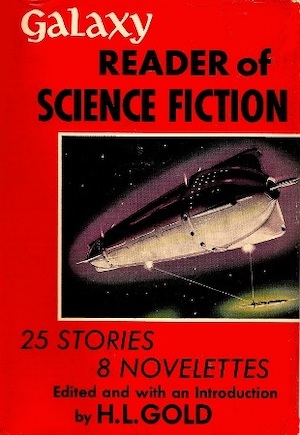
Gold’s anthology is almost as long as Campbell’s, clocking in at 566 pages. Sorted by increasing implausibility, beginning with almost mundane narratives before building towards outré tales, the anthology is almost as rich as the Astounding anthology in classics. It includes oft-anthologized works like “The Stars are the Styx” and “Betelgeuse Bridge.” Galaxy first hit the stands in 1950, which means that Gold had at most a dozen and a half issues from which to select stories. The fact that he was able to assemble this many worthwhile stories from so few issues should have been a warning to Astounding: Galaxy would soon eclipse the older magazine in the decade to come.
The Best from Fantasy and Science Fiction, edited by Anthony Boucher and J. Francis McComas (1952)
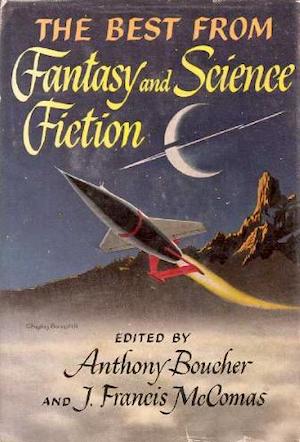
At just 214 pages, Boucher and McComas’s volume is considerably thinner than either Campbell’s or Gold’s. This is not because F&SF had had a shorter run than Galaxy (although it was significantly younger than Astounding); F&SF was actually slightly older than Galaxy. It is because Boucher and McComas focused on recent issues of F&SF, delivering something close to an actual annual. This judicious approach paid off; this was the first of at least two dozen volumes drawn from F&SF’s pages.
Lambda 1 and Other Stories, edited by John Carnell (1964)
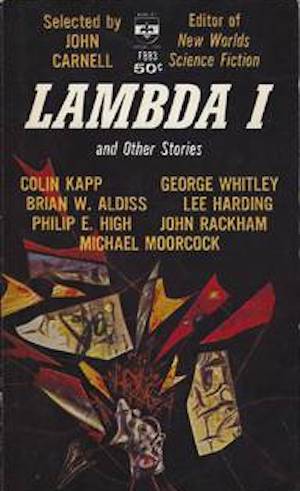
I’d love to be able to discuss Carnell’s 1955 The Best from New Worlds Science Fiction here, but I’ve never seen a copy. I suspect it never made it to Canada (or the US). As Carnell complains in the introduction to this volume, American SF tended to eclipse British publications. Successful British authors were (and are) often better known for their US publications than they were for their British works. When Lambda 1 was published, it had been a decade since a collection of British material had been put together. As the editor of New Worlds, which was a generation old when he grumpily composed his essay, this was a particular sore point for Carnell. It’s rather odd, therefore, that unlike the Campbell, the Gold, or the Boucher & McComas anthologies, Lambda 1’s title does not make clear that these stories are drawn from New Worlds Science Fiction, although they are.
The most recognizable name in the table of contents is Michael Moorcock, whose “Flux” offers revelations about the nature of time that would be of no comfort to time travelers. Moorcock was, of course, Carnell’s successor, under whom the magazine would become a bastion of New Wave SF.
The Best Science Fiction from Worlds of If Magazine, edited by Frederik Pohl (1964)
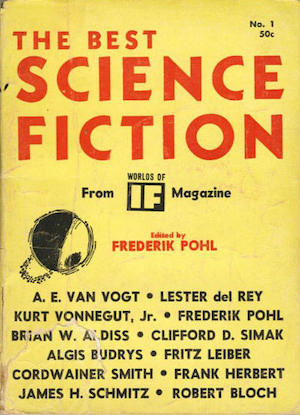
If survived the American News Company’s extinction event by becoming Galaxy’s junior step-sibling, the magazine to which obscurer authors were consigned. One might expect the result would be a second-rate magazine, but in fact the magazine’s status gave stories a freedom Galaxy’s more closely scrutinized stories may have lacked. If was a frequent Best Professional Magazine Hugo finalist, winning in 1966, 1967 and 1968. This anthology draws from early in If’s golden age under Pohl, offering such delights as one of the earliest of Saberhagen’s Berserker stories.
***
Even though the last sixty-plus years have been a hard time for magazines (particularly during the extinction event that followed American News Company’s 1957 liquidation), three or four of the five magazines mentioned above survive in one form or another to the present day. Do anthologies like the above facilitate survival? Given the recent catastrophic loss of Amazon’s Newstand, today’s magazine publishers may be pondering such strategies.
In the words of fanfiction author Musty181, four-time Hugo finalist, prolific book reviewer, and perennial Darwin Award nominee James Davis Nicoll “looks like a default mii with glasses.” His work has appeared in Interzone, Publishers Weekly and Romantic Times as well as on his own websites, James Nicoll Reviews (where he is assisted by editor Karen Lofstrom and web person Adrienne L. Travis) and the 2021, 2022, and 2023 Aurora Award finalist Young People Read Old SFF (where he is assisted by web person Adrienne L. Travis). His Patreon can be found here.










